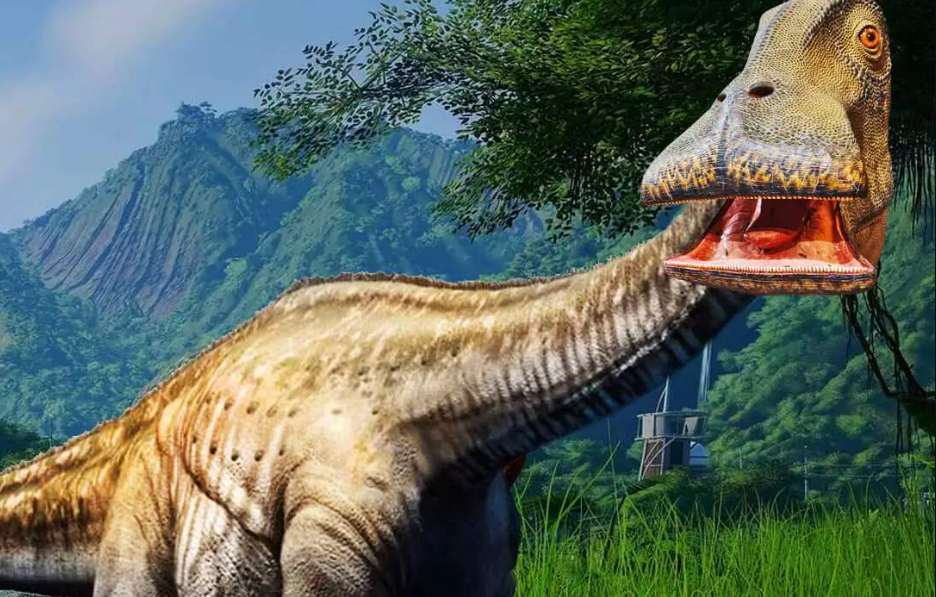Dinosaurs, the enigmatic creatures that once roamed our planet, continue to captivate our imagination. These ancient beings varied greatly in size, shape, and features. One particular dinosaur has piqued the interest of scientists and enthusiasts alike due to its extraordinary dental structure—500 teeth! In this article, we delve into the fascinating world of this unique dinosaur, exploring its characteristics, significance, and the mysteries that surround it.
Dinosaur Teeth: A Unique Feature
Understanding dinosaurs often begins with examining their teeth. These structures provide valuable insights into the dietary habits, lifestyle, and evolutionary adaptations of these prehistoric creatures. While some dinosaurs had sharp, carnivorous teeth, others boasted flat, herbivorous dental formations. The diversity in dental structures across different species adds to the intrigue of the dinosaur kingdom.
The Enigmatic Dinosaur with 500 Teeth
Meet Nomenodon horrendus, the dinosaur with an astounding 500 teeth. Classified within the Theropoda order, this species stood out not just for its size but for the sheer number of teeth in its jaw. Nomenodon, meaning “nameless tooth,” is an apt descriptor for a dinosaur that challenges our understanding of dental evolution.
Dental Structure and Adaptation
The dental structure of Nomenodon horrendus is a marvel of adaptation. The teeth are not densely packed but form intricate patterns in the jaw, resembling a conveyor belt of tiny, interlocking structures. This adaptation is believed to have provided a distinct advantage in the dinosaur’s ability to consume a variety of plant and animal matter efficiently.
Dietary Habits
The 500 teeth of Nomenodon horrendus weren’t just a cosmetic feature. They played a crucial role in its dietary habits. From crunching tough vegetation to tearing through flesh, this dinosaur’s teeth were versatile tools for survival. Comparisons with other dinosaur species reveal the unique niche that Nomenodon occupied in the prehistoric ecosystem.
Paleontological Discoveries
Fossils of Nomenodon horrendus have been unearthed in various locations, shedding light on its geographical distribution and the ecosystems it inhabited. The meticulous excavation and study of these fossils have allowed paleontologists to reconstruct the life and times of this extraordinary dinosaur.
Scientific Studies and Research
Scientists have dedicated extensive research to understanding the intricacies of Nomenodon’s dental anatomy. Studies analyzing the growth patterns, wear and tear, and chemical composition of the teeth have provided valuable data for the broader field of paleontology. The contributions of these studies extend beyond Nomenodon, offering insights into the evolution of dinosaur teeth in general.
Popularization in Media and Culture
Beyond the scientific realm, Nomenodon horrendus has left its mark on popular culture. From appearances in documentaries to starring roles in fictional works, this dinosaur has become a symbol of prehistoric intrigue. Its depiction in various forms of media has further fueled public interest in the world of dinosaurs.
Evolutionary Context
Placing Nomenodon horrendus in the broader context of dinosaur evolution reveals its significance in the timeline of prehistoric life. Understanding the environmental conditions and ecological interactions of its time provides a holistic view of the evolutionary processes that shaped the dinosaur kingdom.

Controversies and Debates
As with many scientific discoveries, Nomenodon’s unique features have sparked debates among paleontologists. Some researchers argue for specific dietary preferences, while others propose alternative theories. These controversies contribute to the dynamic nature of paleontological discourse, reminding us that science is a continual process of inquiry and discovery.
Educational Significance
The study of Nomenodon horrendus goes beyond mere fascination; it has educational implications. In classrooms and museums, this dinosaur serves as a tangible example of the complexity of prehistoric ecosystems. Its dental adaptation becomes a lesson in evolutionary biology and the diversity of life forms that once inhabited our planet.
Conservation Implications
Examining the past isn’t just about nostalgia; it informs our approach to conservation today. The study of ancient species like Nomenodon underscores the interconnectedness of ecosystems and the delicate balance required for biodiversity. Lessons learned from the distant past can guide modern conservation efforts, emphasizing the importance of preserving our planet’s rich tapestry of life.
Future Discoveries
The field of paleontology is ever-evolving, and the story of Nomenodon horrendus is far from over. Ongoing excavations and advancements in scientific techniques may reveal new facets of this dinosaur’s life and environment. The potential for future discoveries keeps the allure of paleontology alive, promising more revelations about Earth’s ancient inhabitants.
Conclusion
In the vast tapestry of dinosaur history, Nomenodon horrendus stands out as a testament to the diversity and adaptability of prehistoric life. Its 500 teeth, once a perplexing enigma, now offer a window into the intricacies of a bygone era. As we continue to unravel the mysteries of Nomenodon and its contemporaries, the allure of dinosaurs remains undiminished, reminding us of the wonders that once roamed our planet.
FAQs
- How was Nomenodon horrendus discovered?
- Discusses the archaeological process and the locations of fossil discoveries.
- Why did Nomenodon have 500 teeth?
- Explores the evolutionary advantages and dietary implications of the unique dental structure.
- How does the study of Nomenodon contribute to paleontology?
- Highlights the scientific significance and educational value of studying this dinosaur.
- Are there other dinosaurs with a similar dental adaptation?
- Discusses comparisons with other dinosaur species and their dental features.
- What can we learn from Nomenodon about ancient ecosystems?
- Explores the broader ecological implications and conservation lessons derived from Nomenodon’s study.



